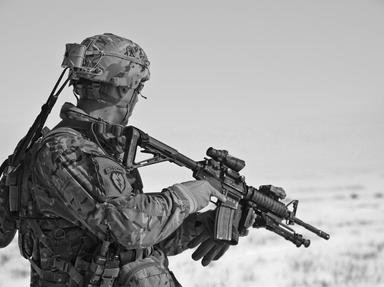Quiz Answer Key and Fun Facts
1. The use of daggers in warfare was common during the Middle Ages. Which left-handed dagger was specifically used to trap an opponent's sword by a flick of the wrist?
2. Which sword of Sri Lanka, with its short, curved blade, was known for its superb craftsmanship, ornate carvings, and superior use as a weapon?
3. Developed in Wales and used in the English Army from the 13th to 16th centuries, which weapon (think Robin Hood) could destroy an advancing enemy by the sheer number of projectiles it released?
4. Rifles have been around for hundreds of years. In the early 19th century, a certain flintlock rifle named for a master gunsmith was the first to be officially adopted by the British Army. What was the name of this rifle?
5. In Medieval Europe, the sword was a highly regarded weapon. One type of sword had a broad blade, a simple cross-guard and pommel. It became popular during the time of the Crusades. What was this sword called?
6. The Prussians defeated the Austrian Empire at the 1866 Battle of Königgrätz, owing in part to the type of weapon they used. It helped that they were also excellent planners. Which of the following weapons helped them defeat the Austrians?
7. Born in Utah in 1855, this successful designer of firearms and firearm mechanisms invented the telescopic bolt still found on modern semi-automatic pistols and the gas-operated machine gun. What's his name?
8. The Egyptian pharaoh Tutankhamen owned a gold-handled dagger, the blade of which was made out of a certain metal, considered rare at that time. Which metal?
9. On the battlefield, stand-alone grenade launchers eventually replaced light mortars. One such grenade launcher, developed during the 1950s, was the M79. The troops had a nickname for it. What was it called?
10. Which medieval club-like weapon came equipped with spikes and was used by peasants in 17th-century Europe?
Source: Author
nmerr
This quiz was reviewed by FunTrivia editor
trident before going online.
Any errors found in FunTrivia content are routinely corrected through our feedback system.

